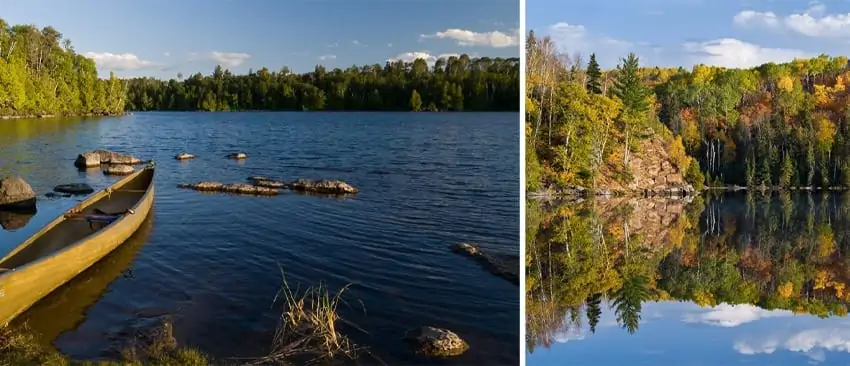
About the Superior National Forest
The Superior National Forest is an almost 4 million-acre forested area that is located in the Arrowhead Region of the state of Minnesota. The forest also encompasses the greater Boundary Waters Canoe Area Wilderness (BWCAW). The forest is home to the tallest natural peak in Minnesota, Eagle Mountain, which is 2,301 feet tall and offers spectacular views over the vast forest.
The Superior National Forest is part of the United States Forest system and offers unlimited recreational activities year-round. You will be treated to different images of the forest as the season change. The deep summer greens change to spectacular reds and golds in the fall. Fall is then followed by the crisp white solitude of winter and broken by the sound of running water and icicles melting in the spring.
There are over 2,000 miles of trails are designated for recreational use. Enjoy hiking, hunting, fishing, biking, horseback riding, cross-country skiing, and snowmobile and ATV riding. Canoeing, biking, and hiking are the most popular activities enjoyed in the forest.
Most biking trails are along gravel-surfaced forest roads. There are also two dedicated single-track areas at Britton Peak and Pincushion Mountain Trail System. Britton Park is in Tofte and Pincushion is just outside of Grand Marais up the Gunlfint Trail. Those who like to keep both feet on the ground enjoy taking advantage of the 400 miles of hiking trails within the park. These trails range from easy to difficult.
The Superior National Forest’s most treasured resource is its lakes and water resources. About one-third of the forest lies within the Boundary Waters Canoe Area Wilderness (BWCAW) which includes over 1,500 miles of canoe routes, nearly 2,200 designated campsites, and more than 1,000 lakes and streams seemingly untouched since the glaciers melted.
Wildlife in the Superior National Forest
The park is also home to many species of birds. Look into the air, especially during the spring or fall, and you may spot one of the 318 different species. Some include various raptors and 24 different types of warblers! Grab those binoculars and keep your ears alert for the sounds of the birds. The area has the last stronghold of the gray wolf in the lower 48 states. Approximately 400 wolves continue to roam within the boundaries. The Superior National Forest’s most treasured resource is its lakes and water resources. The lakes and rivers also offer an abundance of fish species including walleye, northern pike, smallmouth bass, and trout
This northern forest is dominated by many pines, fir, and spruce trees. You may also find mountain ash, maple, aspen, and paper birch. The Superior National Forest has some of the oldest rocks on the surface of the earth. Granite from the Laurentian Shield formed more than 1.1 billion years ago and created the Sawtooth Mountains. Also found within the park are iron ore and fossil cyanobacteria mounds called stromatolites. These were formed about 2 billion years ago.
